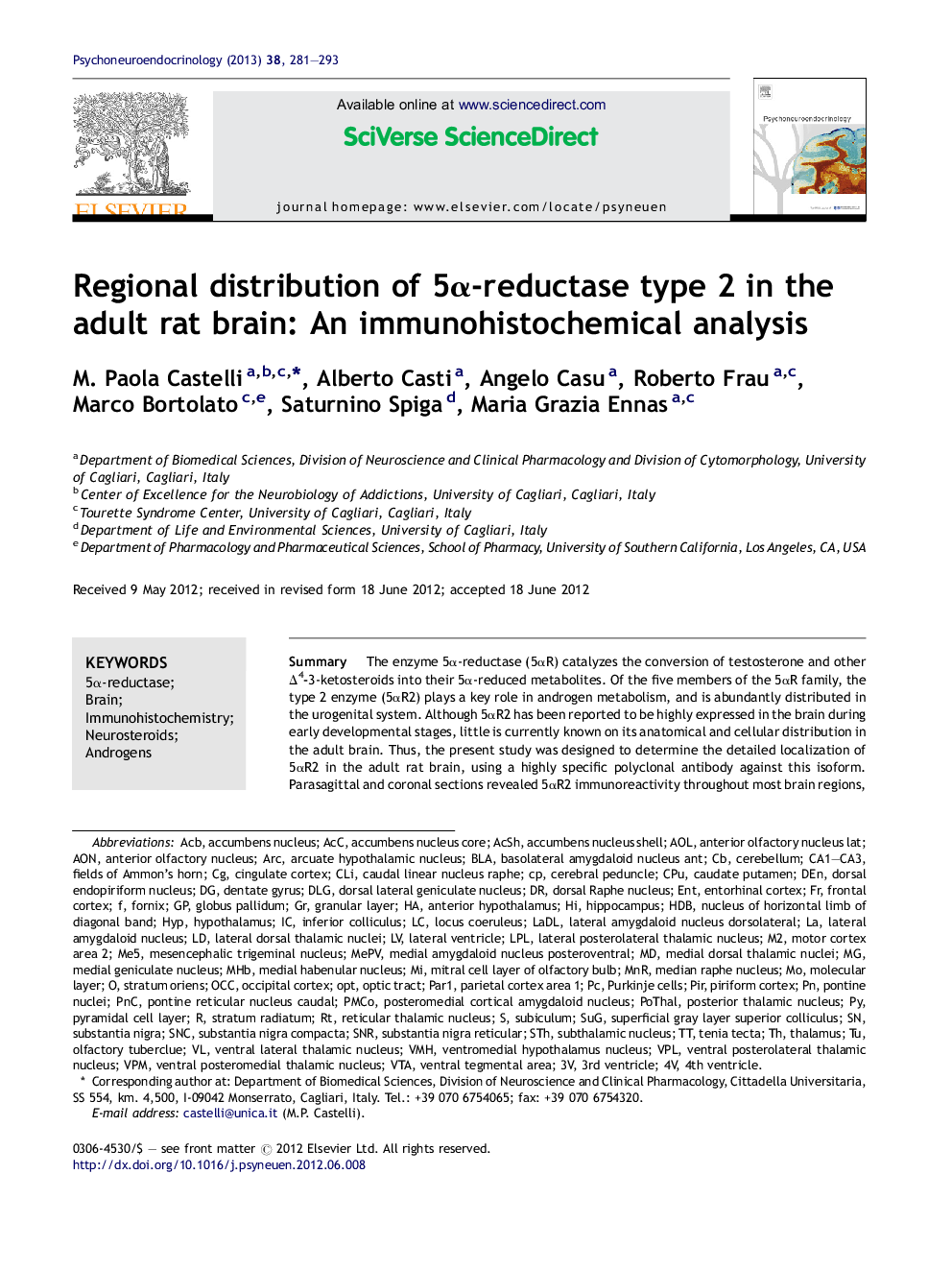| Article ID | Journal | Published Year | Pages | File Type |
|---|---|---|---|---|
| 10306688 | Psychoneuroendocrinology | 2013 | 13 Pages |
Abstract
The enzyme 5α-reductase (5αR) catalyzes the conversion of testosterone and other Î4-3-ketosteroids into their 5α-reduced metabolites. Of the five members of the 5αR family, the type 2 enzyme (5αR2) plays a key role in androgen metabolism, and is abundantly distributed in the urogenital system. Although 5αR2 has been reported to be highly expressed in the brain during early developmental stages, little is currently known on its anatomical and cellular distribution in the adult brain. Thus, the present study was designed to determine the detailed localization of 5αR2 in the adult rat brain, using a highly specific polyclonal antibody against this isoform. Parasagittal and coronal sections revealed 5αR2 immunoreactivity throughout most brain regions, with strong immunolabeling in the layers III and VI of the prefrontal and somatosensory cortex, olfactory bulb, thalamic nuclei, CA3 field of hippocampus, basolateral amygdala and Purkinje cell layer of cerebellum. Lower 5αR2 levels were detected in the hypothalamus and midbrain. Moreover, double labeling fluorescence with confocal laser scanning microscopy (CLSM) revealed that 5αR2 is localized in neurons, but not in glial cells. Specifically, the enzyme was documented in the pyramidal neurons of the cortex by CLSM analysis of simultaneous Golgi-Cox and immunofluorescent staining. Finally, low levels of 5αR2 expression were identified in GABAergic cells across the cortex, hippocampus and striatum. These findings show that, in the adult brain, 5αR2 is distributed in critical regions for behavioral regulation, suggesting that the functional role of this isoform is present throughout the entire lifespan of the individual.
Keywords
stratum oriensAOLPMCoVPMDLGVMHCLiHYPLPLVTAHDBPAR1VPLMe5ventral lateral thalamic nucleusGlobus pallidumACCMePVCA1–CA3CPUSTHBLAmitral cell layer of olfactory bulbLaDLSNCENTOPTSNRPNCDen5α-reductaseAcbMHbMnRneurosteroidsstratum radiatumSuGandrogensImmunohistochemistrylateral ventricle3rd ventricle4th ventriclePirThalamussubstantia nigraoptic tractSubiculumPurkinje cellscerebral peduncledentate gyrusOccfornixOccipital cortexEntorhinal cortexfrontal cortexpiriform cortexArcgranular layerpyramidal cell layermolecular layerlocus coeruleusSubstantia nigra compactaCerebellumBrainTenia tectaventral tegmental areaaccumbens nucleusanterior olfactory nucleusposterior thalamic nucleusVentral posteromedial thalamic nucleusreticular thalamic nucleusventral posterolateral thalamic nucleusmedian raphe nucleusdorsal raphe nucleusMesencephalic trigeminal nucleusmedial habenular nucleusposteromedial cortical amygdaloid nucleusLateral amygdaloid nucleusdorsal lateral geniculate nucleusarcuate hypothalamic nucleusPontine nucleimedial geniculate nucleusdorsal endopiriform nucleusSubthalamic nucleusHypothalamusanterior hypothalamusHippocampusCaudate putamencingulate cortexInferior colliculusAON
Related Topics
Life Sciences
Biochemistry, Genetics and Molecular Biology
Endocrinology
Authors
M. Paola Castelli, Alberto Casti, Angelo Casu, Roberto Frau, Marco Bortolato, Saturnino Spiga, Maria Grazia Ennas,
